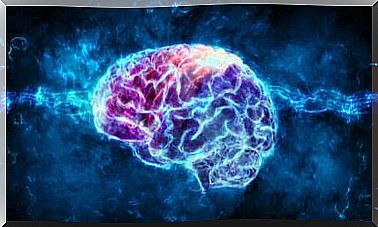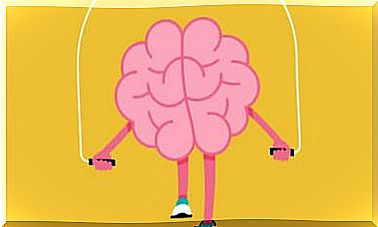Glutamatergic Hypothesis Of Schizophrenia

Schizophrenia is a complex disorder that affects approximately 1% of the world’s population, being one of the most important causes of chronic disability. Although there is currently no great agreement on its etiology, in recent years it has been associated with alterations in glutamatergic neurotransmission. Thus, the glutamatergic hypothesis of schizophrenia stands as a new approach to the cause and possible treatment of this mental disorder, in which the protagonist is the glutamate mechanism.
This hypothesis emphasizes the failure of a neurotransmitter called glutamate. The process that occurs is a glutamate hypofunction. To better understand the mechanism of this neurotransmitter in schizophrenia, it is important to know how it works and what schizophrenia consists of. Let’s go deeper.
What is glutamate?
Glutamate is one of the main neurotransmitters in the nervous system. It is responsible for 80% of the energy consumed by our brain. In addition, it participates in some metabolic processes, in the production of antioxidants, in the motor and sensitive systems, in emotions and in behavior.

This neurotransmitter acts by mediating excitatory responses and intervenes in neuroplasticity processes, that is, the ability of our brain to adapt to some experience as a result. It is also involved in learning processes and is related to other neurotransmitters such as GABA and dopamine.
When glutamate is released by synaptic vesicles, it activates different pathways. In addition, this neurotransmitter is associated with another, GABA, its precursor. GABA works by deactivating the pathways that glutamate has activated, therefore it is antagonistic to glutamate.
On the other hand, glutamate intervened in cognitive, memory, motor, sensory, and emotional information. It is no coincidence that its relationship with schizophrenia has begun to be studied, if we take into account its functioning at a cognitive and behavioral level.
What is schizophrenia?
Schizophrenia is a serious mental disorder, which greatly affects a person’s quality of life. According to the current diagnostic and statistical manual of mental disorders, the following symptoms generally occur:
- Hallucinations They are perceptions at the visual or auditory level that do not exist.
- Delusions They have to do with the certainty that a person has about something that is not true. That is, it is a false judgment or belief that the individual holds with great conviction.
- Disorganized language. Confusing use of language. For example, frequent derailment or inconsistency.
- Negative symptoms. It has to do with the presence of abulia (lack of energy to move) or diminished emotional expression.
- Disorganized or catatonic behavior.
For it to be schizophrenia, two or more of the above symptoms must be present, in a period of one month, or less if it has been treated appropriately and, in addition, continuous signs of alteration must persist for at least 6 months. There must also be a deterioration in the functioning of one or more main areas (work, relationships, personal care).
On the other hand, the disease is excluded when these symptoms are due to the effects of some substance. Also, if there is a history of an autism spectrum disorder, schizophrenia is diagnosed only if the hallucinations and delusions are severe.
Origin of the glutamatergic hypothesis
The glutamatergic hypothesis originated in an attempt to respond to the growing need to find a theory to explain this disease, since despite the existence of some theories, they were not sufficient to understand the mechanism of schizophrenia.
Thus, at first it was believed that the cause of schizophrenia was a problem related to dopamine. Later, the researchers realized that glutamate played a fundamental role, in addition to dopamine, and that it could be related to this disease. Thus, the glutamatergic hypothesis arose that proposed that schizophrenia originates from a hypofunction of glutamate in cortical projections. That is, a decrease in the normal function of this neurotransmitter in the cortical region of the brain.
However, the glutamatergic hypothesis of schizophrenia does not exclude the dopaminergic hypothesis. It proposes that when glutamate hypofunction occurs, an increase in dopamine input is generated. That is, this hypothesis is a complement to the dopamine theory.
Glutamate neurons generate activity in GABA interneurons, which in turn are responsible for inhibiting glutamatergic neurons. Then they prevent there is a hyperactivation and therefore, that there is no excess glutamate. This process allows there to be no neuronal death. In schizophrenia, this system is affected.
Receptors involved according to the glutamatergic hypothesis
As we have mentioned previously, the glutamatergic hypothesis is associated with a dysfunction of the glutamatergic receptors, since in schizophrenia they generate less cortical activity and therefore the appearance of certain symptoms. In other words, when glutamatergic receptors do not play the role they should, this disorder appears.
The importance of these receptors was discovered when substances were administered intravenously that blocked them and that in turn caused cognitive and behavioral symptoms similar to those found in schizophrenia.
On the other hand, the glutamate receptors that have also been studied in schizophrenia are the following:
- Ionotropics. They are receptors that interact with ions, such as calcium and magnesium. For example, the NMDA receptor, AMPA, and kainate. In addition, they are characterized by the transmission of fast signals.
- Metabotropic. They are receptors that bind to G proteins and are characterized by being slow transmission.
It must be emphasized that, although there are some accurate results, there are contradictory others. The ionotropic receptors that have been studied most frequently and that show the best results are NMDAs. The action of AMPA and kainate receptors has also been studied, but the results are not consolidated.
Furthermore, when NMDA receptors malfunction, they cause neuronal death, and therefore behavioral dysfunctions, typical of schizophrenia. And, regarding the ampa and kainate receptors, consistent data from different authors are needed for the information to be considered relevant.

Instead, metabotropic receptors are associated with neuronal protection. Being altered, the action of glutamate is decreased. Therefore, they cause behavioral problems, typical of schizophrenia. Also, there are several studies that approach the therapeutic scope of schizophrenia.
Therapeutic possibilities based on the glutamatergic hypothesis
Based on the glutamatergic hypothesis, pharmacological substances have been created that attempt to imitate the role of glutamate receptors. Apparently good results have been obtained at an experimental level.
However, this does not mean that the process is simple or that the treatment is effective. It is not easy to control the activation of receptors and hyperarousal could be harmful. Furthermore, because studies have focused on global symptoms, not by domains, and most have been done in animals, we cannot know with certainty the exact relationship between a symptom and the brain location in humans.
The glutamatergic hypothesis is a great advance, but it must not be forgotten that schizophrenia does not only have biological factors but also environmental ones. Future research could combine various aspects to better understand this disorder. Perhaps a comprehensive approach would help to understand all the factors associated with this disorder.
Bibliographic references
Gaspar, PA, Bustamante, LM, Silvia, H., & Alboitiz, F. (2009). Molecular mecanisms underlyng glutamatergic dysfunction in schizophrenia: therapeutic implications. Journal of neurochemestry, 111, pp. 891-900.









